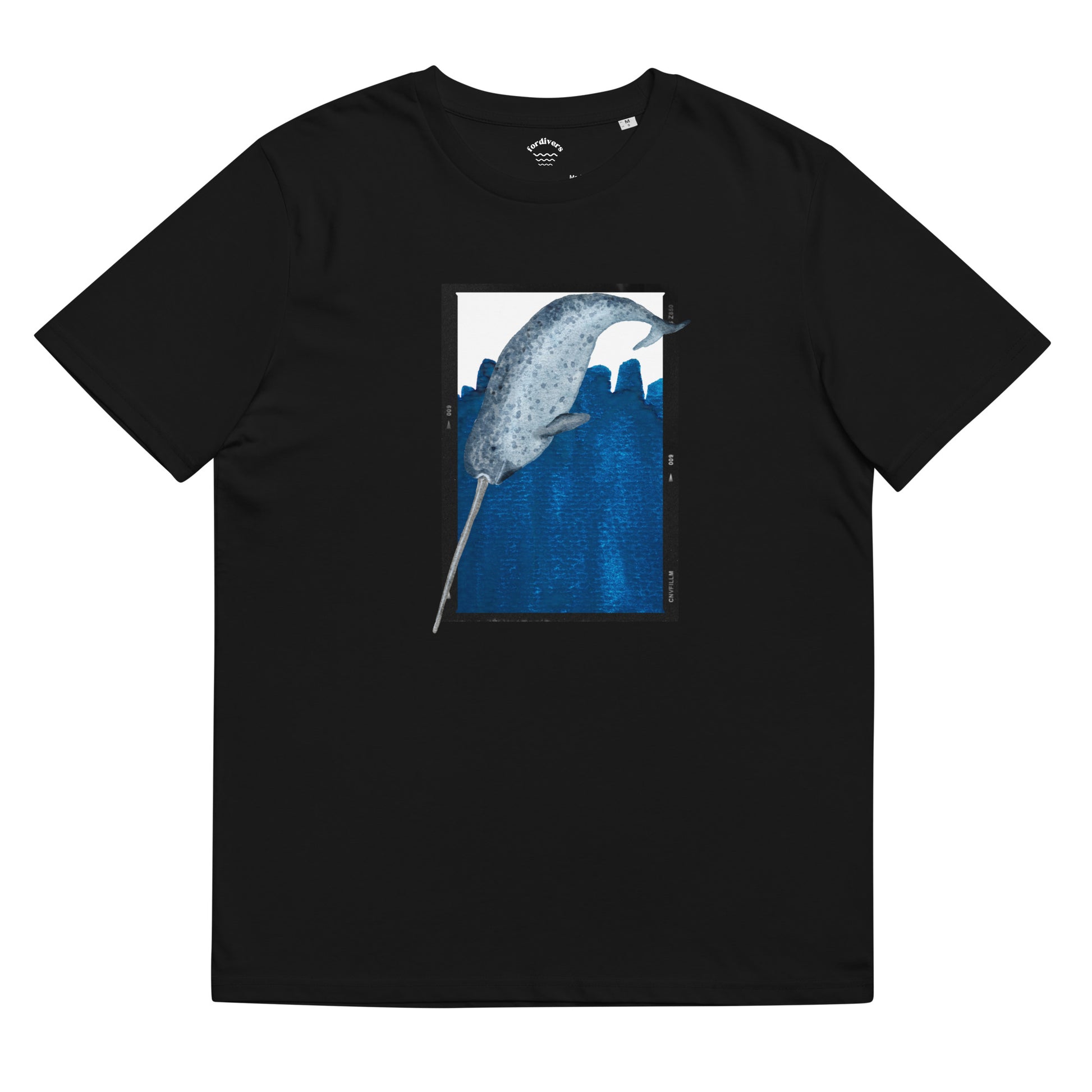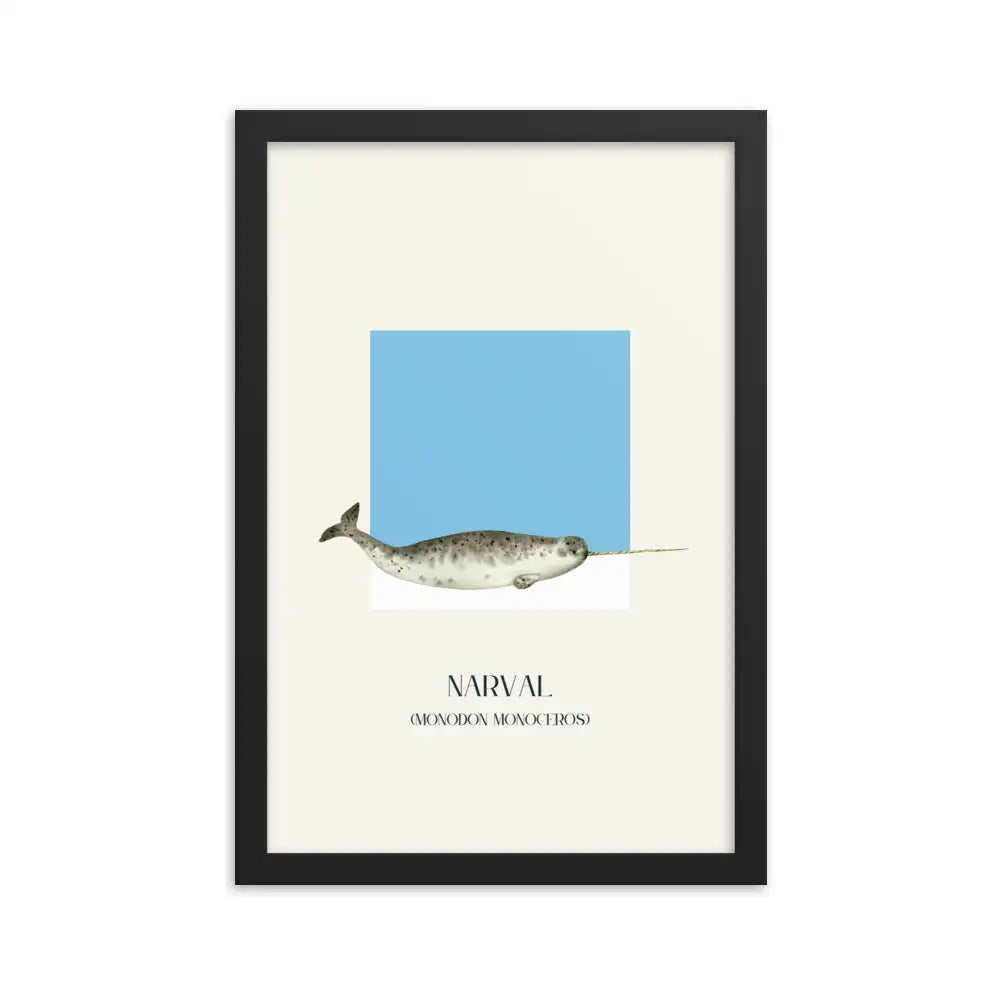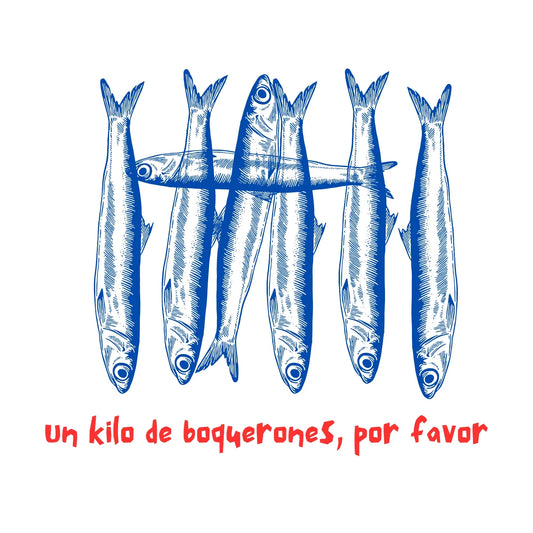The narwhal (Monodon monoceros) is a marine mammal belonging to the order of cetaceans. It falls within the family of Monodontidae since it has a single tusk. This is the most peculiar characteristic of this cetacean, its long tusk that can reach up to 2 meters and weigh 10 kilograms.
In reality, narwhals grow two teeth, but one of them, the right one, never emerges from the gum, while the left one, only in the case of males, emerges from the front of the jaw. This tusk never stops growing until the animal's death and spirals to the left.
The narwhal is a cetacean with a strong and compact body with a small rounded head. Since it lives in Arctic areas, it has a thick layer of blubber that helps it retain heat. It is a very social animal that lives in groups of 20 to 30 individuals... although groups of up to 1,000 have been observed during migration seasons.
Narwhals are dark on the dorsal side, with a spotted leopard pattern, and whitish on their abdomen, allowing them to go unnoticed by their predators, primarily orcas, Greenland sharks, and to a lesser extent, walruses and polar bears. Narwhals do not have a dorsal fin but have an uneven crest along their back. The outer end of each flipper curves upward, and their tail fin is fan-shaped with a deep notch.
Original Gifts for Narwhal Lovers - Worldwide Shipping!
SEE MORE GIFTS FOR WHALE LOVERS
Adult males reach a length of 4.6 meters and a weight of 1,600 kilograms. Females are somewhat smaller: 4.0 meters in length and one ton in weight.

Narwhals feed in deep bays and fjords in the Arctic, where they find a good amount of cod, squid, and other food such as flatfish, pelagic shrimps, and octopuses. At one point, it was thought that the tusk was used to stir up sediments from the seabed in search of food, similar to what other whales like the gray whale does.
Mature males reach sexual maturity at 8 or 9 years, while females do so at 4 to 7 years of age. The gestation period is 15 months. Calves, measuring 1.5 meters at birth and weighing about 80 kilograms, are grayish-blue at birth and develop the leopard pattern of adult skin as they grow. Narwhals reproduce in spring, with mating typically occurring in mid-April, and calves are born the following July.
The function of the narwhal's tusk has been a subject of debate, but recent research has shown it is related to mating rituals. Many males have been found with broken tusks, and a skull with a tusk tip embedded was even discovered. These studies support the theory that the horn is used as a weapon by males in battles for possession of females. This evidence, along with data indicating rapid tusk growth in male sexual maturity, suggests a possible reproductive function.
The narwhal is a deep-sea cetacean that can dive to depths of up to 1,200 meters to find food. It has up to 10 centimeters of blubber under its skin, which is absolutely necessary for its protection in the frigid Arctic waters, as they often get trapped in ice. At times, they can become trapped under the ice without finding an escape and die of suffocation since they can "only" hold their breath for 20 to 25 minutes. A case was documented in the winter of 1914-1915 in Greenland, where more than 1,000 narwhals died in one of these "traps."
Humans have hunted narwhals for their tusks for centuries, and it is even believed that the origin of the unicorn myth lies in the narwhal's tusk. During the Middle Ages, their tusks were traded for treating epilepsy, strengthening the heart, inducing sweating, and countering certain poisons. A narwhal tusk was one of Queen Elizabeth I's most prized possessions.
Narwhals are also significant for many Inuit cultures. While the meat is primarily used to feed sled dogs, the skin is a vital source of vitamin C. Known as "muktuk," the Inuit make a kind of gum with narwhal skin, which many of them find to be a delicacy.
Current population estimates in the Northwest Atlantic region suggest that there are around 50,000 narwhal individuals still in existence. Among the greatest threats to narwhals are climate change, which is causing their habitat to disappear, and toxic spills. Some narwhal carcasses studied have been found to contain heavy metals like mercury, affecting not only these precious cetaceans but also the Inuit communities that use their meat.























